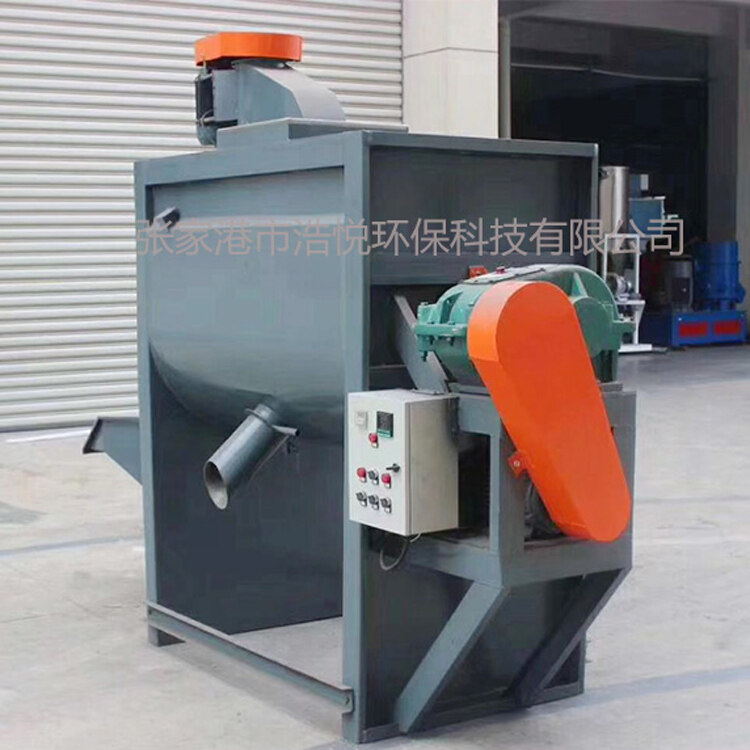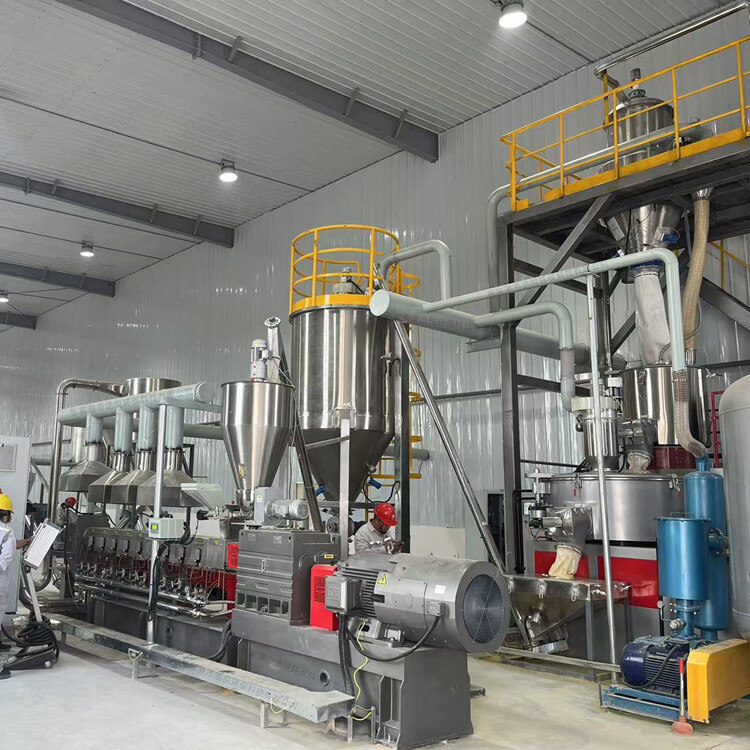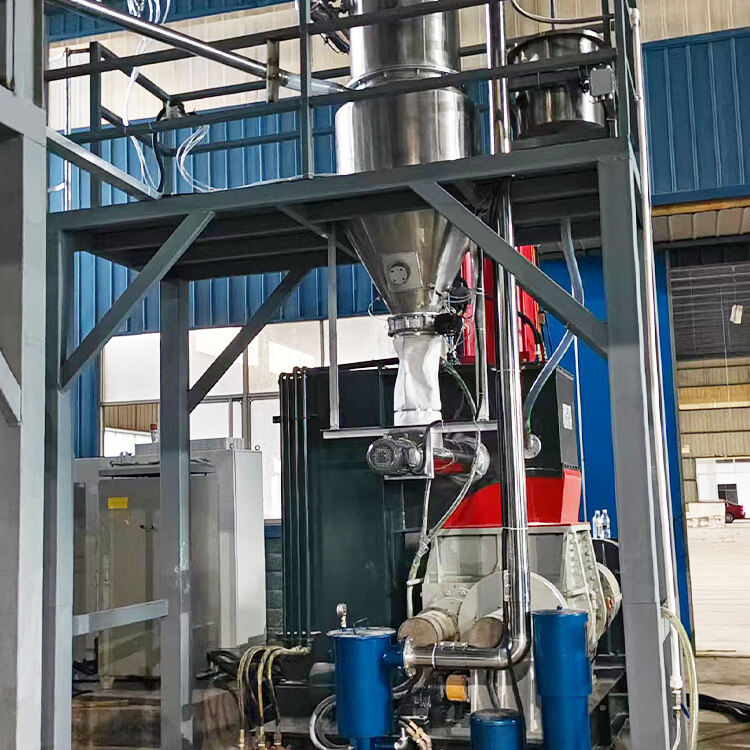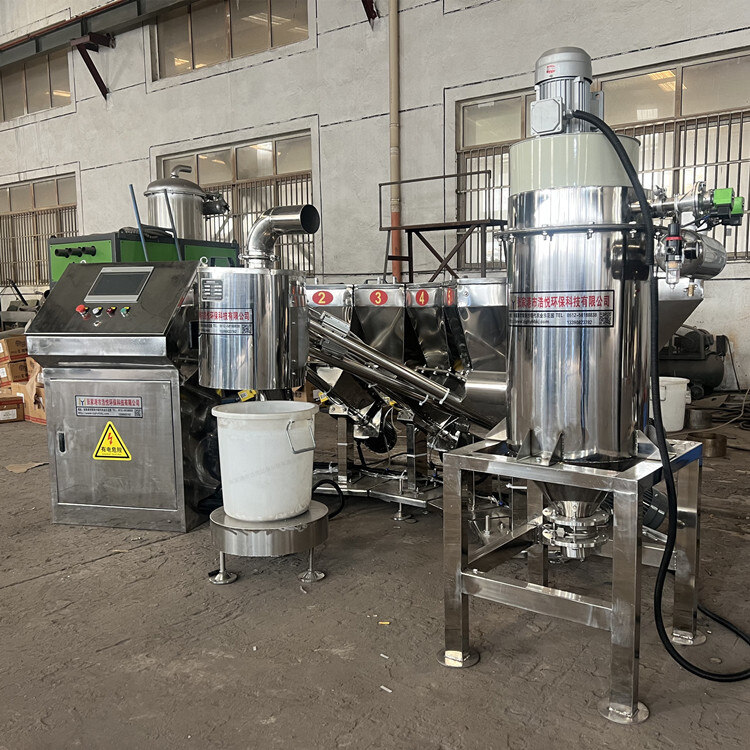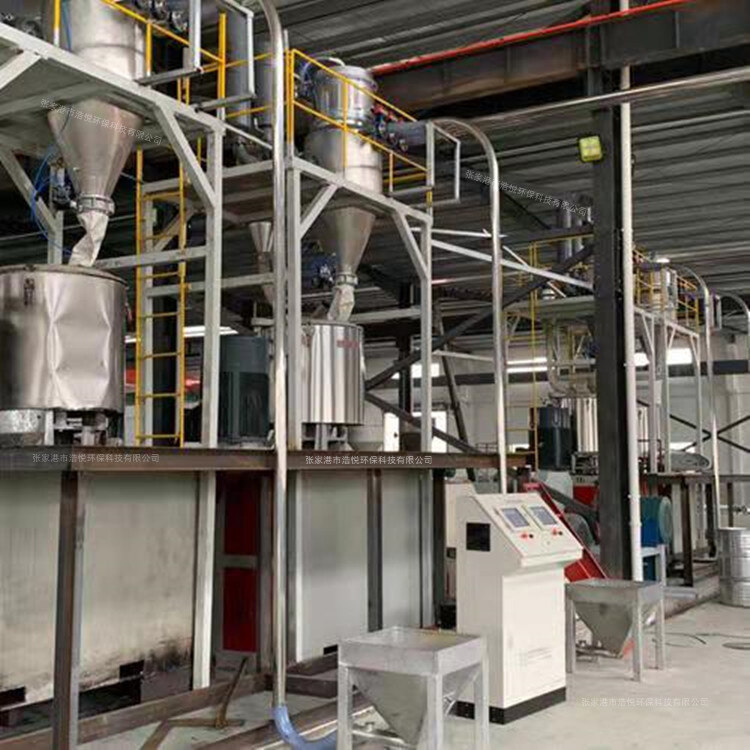- Introduction to automatic batching machine and fully automatic batching machine equipment
- The powder metering system tells you about the introduction of the mixing and drying machine
- 1000kg vacuum feeding machine
- Fully automatic small material batching system
- Research on Innovation of Automatic Weighing Machine Technology
- Design and operation of automatic batching system using PLC, industrial computer and frequency converter
Horizontal spiral belt mixer
- Category:Spiral Feeder
- Hits:134次
- Release Date:2025-06-30
- Share:
- Inquiry
- Details
In industrial production, uniform mixing of materials is a key factor in ensuring product quality. As an efficient mixing equipment, the horizontal screw belt mixer is widely used in various fields such as chemical, food, building materials, pharmaceuticals, etc. due to its unique structural design and powerful mixing function. Whether it is the mixing of powdered and granular materials, or the stirring of solid-liquid and liquid-liquid materials, the horizontal screw belt mixer can meet production needs with excellent performance. The following will provide a comprehensive and in-depth introduction to the horizontal screw belt mixer from the aspects of equipment structure, working principle, core advantages, application scenarios, and development trends.
1、 Core structure composition of equipment
The horizontal ribbon mixer is mainly composed of seven core components: the mixing cylinder, mixing shaft, ribbon blades, transmission device, feed inlet, discharge outlet, and frame. These components work together to form an efficient mixing system.
(1) Mixing drum body
The mixing drum is the main structure of a horizontal screw belt mixer, usually made of high-quality stainless steel, carbon steel, or specific corrosion-resistant materials. The corresponding materials are selected according to different production needs and material characteristics. The cylinder is horizontally placed in a cylindrical shape, with a smooth interior to reduce material residue. The length and diameter ratio of the cylinder are carefully designed, usually between 2-3, to ensure sufficient movement space and mixing time for the material inside the cylinder. There are multiple feeding ports above the cylinder, which can simultaneously add multiple materials; There is a discharge port at the bottom, and the size and position of the discharge port are determined according to the characteristics of the material and the discharge method. Common methods include manual butterfly valve discharge, pneumatic discharge, and electric discharge to ensure that the material can be discharged quickly and cleanly.
(2) Mixing shaft and spiral blade
The mixing shaft is the core component of the mixer, located at the center of the mixing drum and fixed to the frame through bearing seats at both ends. The mixing shaft is generally made of high-strength alloy steel, which has sufficient strength and rigidity to withstand the torque and impact force generated during the mixing process.
Spiral belt blades are key components for achieving material mixing, usually composed of multiple spiral belts with different rotation directions. Common structures include inner and outer double-layer spiral belt structures. The spiral direction of the outer spiral belt is opposite to that of the inner spiral belt. When the mixing shaft rotates, the outer spiral belt pushes the material from both ends to the middle, while the inner spiral belt pushes the material from the middle to both ends, forming a convective circulation inside the cylinder. This bidirectional convection motion can achieve uniform mixing of materials in a short period of time. The gap between the spiral blade and the mixing drum is relatively small, generally controlled at 2-5mm, to reduce material residue and improve mixing efficiency. For some special materials, such as high viscosity materials or materials sensitive to shear, special shaped spiral blades can be customized according to requirements, such as serrated, blade shaped, etc., to meet different mixing process requirements.
(3) Transmission device
The transmission device provides rotational power for the mixing shaft, mainly composed of components such as a motor, reducer, coupling, and pulley (or gear). Motors are usually selected as three-phase asynchronous motors, and the appropriate model and power are chosen according to the power requirements and usage scenarios of the mixer. Reducer is used to reduce the speed of the motor and increase the torque, so that the mixing shaft can operate at a suitable speed. Common types of reducers include cycloidal pinwheel reducers, gear reducers, etc. Couplings are used to connect the motor output shaft and the gearbox input shaft, ensuring smooth power transmission; The pulley or gear transmits the power of the reducer to the mixing shaft, achieving the rotational motion of the mixing shaft. The design of the transmission device needs to consider transmission efficiency, stability, and maintenance convenience to ensure that the mixer can operate reliably for a long time.
(4) Inlet and outlet
The feeding port is located above the mixing drum, and the quantity and position are determined according to the production process and material addition method. For situations where multiple materials need to be added simultaneously, multiple feeding ports can be set up and corresponding feeding devices such as screw conveyors, vibrating feeders, etc. can be equipped to achieve automatic feeding of materials. A sealing device is usually installed at the inlet to prevent material leakage and dust flying.
The discharge port is located at the bottom of the mixing drum, and its size and shape are designed according to the flowability and discharge speed requirements of the material. For materials with good fluidity, smaller discharge ports can be used; For materials with poor fluidity, larger discharge ports are required. There are three ways to open and close the discharge port: manual, pneumatic, and electric. The manual discharge port is controlled by a manual valve, which is easy to operate but has lower efficiency; Pneumatic and electric discharge ports are controlled by cylinders or electric actuators to open and close valves, which have the advantages of fast discharge speed and high degree of automation, and are suitable for large-scale production.
(5) Rack
The rack is used to support and fix components such as the mixing drum and transmission device. It is generally made of welded steel or bolted connections, and has sufficient strength and stability. The height and structure of the rack are designed according to the installation position and usage requirements of the mixer, ensuring that the mixer will not produce shaking and vibration during operation. The bottom of the rack usually has anchor bolt holes, which can fix the mixer on the foundation and further improve the stability of the equipment.
2、 Working principle
The working principle of the horizontal screw belt mixer is based on the convection, shear, and diffusion motion of the material. When the stirring shaft rotates under the drive of the transmission device, the helical blade rotates accordingly. Due to the opposite spiral directions of the inner and outer spiral belts, the outer spiral belt pushes the material from both ends of the mixing drum towards the middle, while the inner spiral belt pushes the material from the middle towards both ends, creating a strong convective circulation inside the drum. During the convection process, materials are constantly stirred and stirred, achieving mutual exchange and mixing of materials in different areas.
At the same time, the spiral blade will produce a shearing effect on the material during rotation, cutting larger material particles or clumps into smaller particles, increasing the surface area of the material, and promoting diffusion and mixing between materials. Under the action of shear force, materials will also undergo deformation and flow, further enhancing the mixing effect. In addition, there is a diffusion phenomenon in the movement of materials inside the mixing drum, where material molecules diffuse from high concentration areas to low concentration areas under the action of thermal motion, making the composition of the material more uniform. Through the synergistic effect of convection, shear, and diffusion, the horizontal screw belt mixer can achieve uniform mixing of materials in a short period of time.
3、 Core technological advantages
(1) Efficient mixing performance
The unique spiral blade design and bidirectional convection motion enable the horizontal spiral mixer to achieve uniform mixing of materials in a short period of time. For most materials, the mixing time is generally between 5-15 minutes, which increases the mixing efficiency by 30% -50% compared to other types of mixers. In some production processes that require high mixing uniformity, such as the mixing of food additives and the formulation of drugs, horizontal screw belt mixers can meet strict quality standards and ensure the stability of product quality.
(2) Wide material adaptability
It can be applied to various forms of materials such as powder, particle, sheet, and block, as well as different types of material mixtures such as solid-liquid and liquid-liquid. Whether it is materials with good fluidity or materials with high viscosity, such as putty powder, coatings, dough, etc., the horizontal screw belt mixer can achieve good mixing effects by adjusting the structure and mixing parameters of the screw belt blades. In addition, the mixer can be specially designed and configured according to the characteristics of the materials and production process requirements, such as adding heating or cooling devices, setting up lining, etc., to meet the mixing needs of different materials.
(3) Low energy consumption and low noise
By adopting an optimized transmission system and a reasonable mixing structure design, the horizontal screw belt mixer has lower energy consumption during operation. Compared to similar mixers, its power consumption can be reduced by 20% -30%, effectively reducing production costs. At the same time, the noise generated by the equipment during operation is relatively small, generally controlled below 70-80 decibels, which will not cause significant interference to the working environment and meets environmental and occupational health requirements.
(4) Easy to operate and maintain
The operation interface of the horizontal screw belt mixer is simple and intuitive. Operators only need to set parameters such as mixing time and speed through the control panel to achieve automatic operation of the equipment. The structural design of the equipment is easy to maintain and repair, and the components such as the mixing drum and screw blades are detachable, which facilitates the cleaning of material residues and daily maintenance. The transmission device adopts standardized components, which are easy to replace and repair, reducing the maintenance cost and downtime of the equipment.
4、 Application scenarios
(1) Chemical industry
In the production of chemical products such as coatings, inks, adhesives, and plastic pellets, horizontal ribbon mixers are used for mixing various raw materials. For example, in the production process of coatings, resin, pigments, fillers, additives and other raw materials are added to a mixer according to the formula ratio, and uniform mixing is achieved through stirring to ensure consistent color and performance of the coating; In the production of plastic pellets, mixing plastic pellets, masterbatch, additives, etc. evenly can improve the quality and stability of plastic products.
(2) Food industry
In the field of food processing, the horizontal spiral belt mixer is widely used for mixing flour, Rice noodles, milk powder, seasoning, pre mixed cake powder and other powder materials, as well as mixing sticky materials such as dough and stuffing. In the process of bread making, mix flour, yeast, sugar, salt and other raw materials evenly to lay the foundation for subsequent fermentation and baking; In seasoning production, various spices, additives, etc. are mixed to ensure a uniform and consistent taste of the seasoning.
(3) Building materials industry
In the production of building materials such as cement, dry mortar, putty powder, and insulation materials, horizontal screw belt mixers are used for mixing and blending materials. In the production of dry mortar, cement, sand, additives, etc. are mixed in proportion to ensure that the strength, bonding and other properties of the mortar meet the requirements; In the production of putty powder, mixing heavy calcium powder, ash calcium powder, adhesive powder, etc. evenly can improve the construction performance and quality of putty powder.
(4) Pharmaceutical industry
In the process of drug production, the horizontal screw belt mixer is used for mixing the active ingredients and excipients of drugs, ensuring that the drug ingredients are uniform and meet the requirements of GMP (Good Manufacturing Practice). In the production of solid dosage forms, such as tablets, capsules, etc., the drug powder is mixed evenly with binders, lubricants, etc., to ensure the efficacy and quality stability of the drug.
5、 Development Trends
In the future, horizontal screw belt mixers will develop towards intelligence, large-scale, and green direction. In terms of intelligence, sensors and automated control systems are introduced to achieve real-time monitoring and automatic adjustment of the mixing process, and automatically optimize mixing parameters based on material characteristics and mixing requirements; In terms of large-scale production, in order to meet the demand for large-scale production, develop mixers with larger capacity and higher power, while ensuring mixing uniformity and efficiency; Greenization is reflected in the use of energy-saving motors, optimization of mixing structures to reduce energy consumption, as well as the use of environmentally friendly materials and improved sealing technology to reduce dust and noise pollution, promoting sustainable development of the industry.


